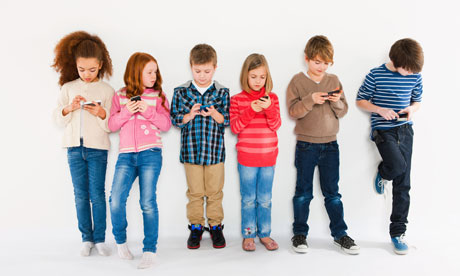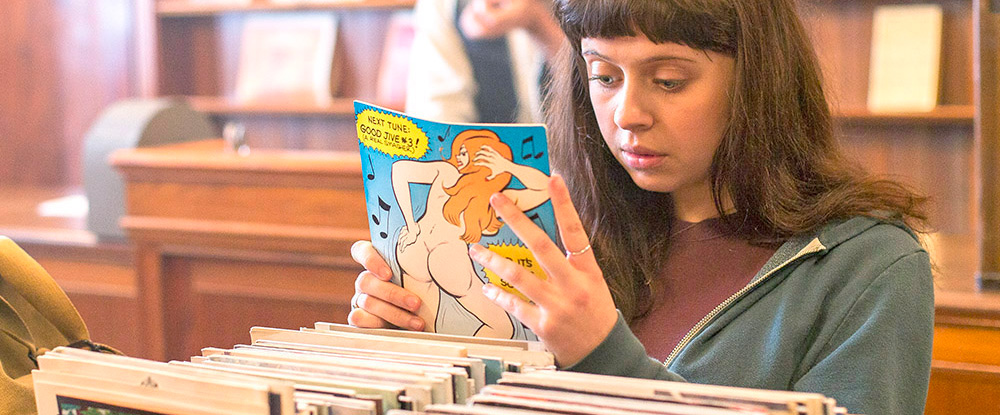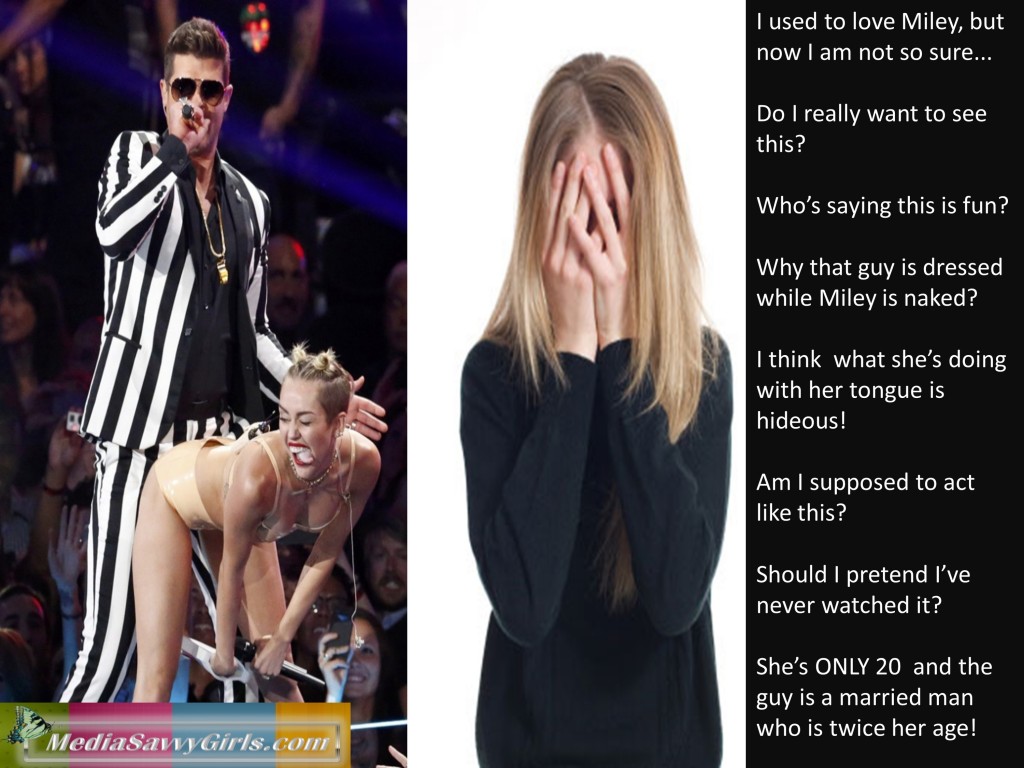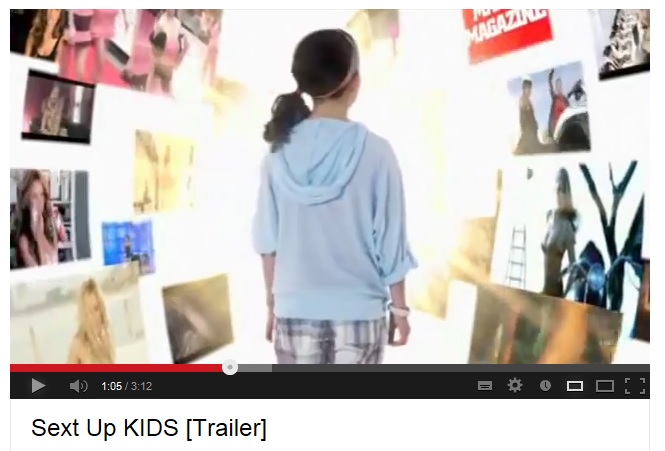
This blog post continues the discussion of academic literature around the topis of media and children gendered and sexual identities (see the first part in my previous article on sexualisation).
The rapid development of the internet and mobile technology has brought with it the entrance of the media into our everyday lives in ways that we could not have imagined prior to the 1990s; children born from the mid-1980s onward have experienced a level of media exposure throughout their developmental years that was hitherto unheard of. This trend only continues to grow—and fast. A study recently conducted by the family advocacy organization Common Sense Media found that 38% of children under the age of 2 have used a mobile device for playing games, watching videos or other media-related purposes. As recently as the year 2011, only 10% had.(1) In the UK, three quarters of 5-15 year olds have internet access at home and 71% have a TV set in their rooms, followed by 62% with a gaming console as well, and 54% own their own mobile phones (Ofcom, 2007). All in all, a great many young people have 24-hour independent access to media.
Of course, wherever the media goes, sex soon follows. Sex sells, after all, and in a world of increasing visual and auditory clutter, it’s one of the few tools left by which a piece of media can woo our fleeting attention. In a previous article, we both debunked some of the common misconceptions surrounding early exposure to sexualised media (such as the idea that it necessarily leads to higher rates of teenage pregnancy and abortion) and introduced the concept of agency; namely, the deeper debate between whether this exposure is removing some of the traditional negative stigma from female sexuality and encouraging the free expression of desire and choice, or whether it is encouraging sexual behaviour in such a way that young people are getting more and more willing to open themselves up to (or perpetrate) exploitation. In essence, are we dealing with the liberal encouragement of pleasure, or the destruction of natural innocence in favour of danger?
Proving either stance is fraught with obvious difficulty; while some studies have been able to show, for example, that teens who watch more than two hours of television per day are 30% more likely to have sex, regardless of parental attitudes, (parental disapproval was actually shown to more than double this likelihood) (2) assessing how much agency these teens wield on a case-by-case basis is challenging, if not impossible.
To illustrate, teens who watch more than two hours of television per day may well do so because they are having social difficulties at school, have few friends, and thus, are quicker to leap into bed with other teens when the opportunity arises. Such teens would seem to be acting for acceptance or under the influence of peer pressure, rather than acting simply because the media told them to. Similarly, teens with strict parents are much more likely to suffer from poor self-esteem (and therefore an even greater craving for acceptance) (3), which could explain why the rates get even higher for those teens whose parents have very strict attitudes about sex.
While one might still argue the wisdom of those teens’ choices, if the above were true, the young people in question would still be acting with agency, regardless of the media’s influence. So how, then, lacking hard statistical data, do we measure the effect of children’s sexualisation on agency, on later pleasure experienced as young adults, or possible exposure to danger? In other words, the contextual factors at play make very difficult to make a fair assessment of media influences, as how can researchers isolate media effects from all the other (cultural, social, economic) influences in children’s lives?
One possible avenue of assessment is the observation of those so-called Millennials, particularly the young women who were so aggressively marketed to during the “Girl Power” decade that was the 1990s, and who are now adults. Indeed ‘girl power’ has become now a well-established and very successful marketing tool and a branding of girlhood (Klein 2000). When I think back to the mid-90s, I invariably remember a time when one could not turn on the television set or surf the internet without being bombarded by images of all-girl music groups strutting proudly in crop tops, brassieres, mini-dresses, and enormous platform shoes. Many of the fans of these groups, particularly the Spice Girls, were as young as five years of age, or younger, a fact which inspired a great deal of concern at the time. In 1994, for instance, Mary Pipher in her book Reviving Ophelia– selling 1.6 million copies – decried our media-saturated culture for “poisoning” young girls.(4)
Today, those little girls are all grown up, and form both a demographic that retains the attention of marketers and the backbone of “third wave” feminism. Those who work closely with both media and young women (see for instance Kathleen Rowe Karlyn from Genders.org) have noticed an interesting trend:
“As a teacher and researcher of film studies and television and the mother of three daughters in early adulthood, I’ve been following the emergence of girl culture since the mid-nineties. Recently I spoke to a large group of academics and other professionals who work with girls about the ways such media icons as Buffy the Vampire Slayer, Xena Warrior Princess and the Spice Girls challenge familiar representations of femininity by affirming female friendship, agency and physical power. Part of that pleasure involves reclaiming the right not only to the term “girl” but to “girly pleasures” trivialized by the culture at large, such as shopping and dressing up… In a punchy and knowledgeable survey of girl culture in Spin magazine, Ann Powers describes how girls aggressively flaunt traits formerly viewed as demeaning by both feminists and misogynists: prettiness, ‘brattiness’, and sexual flamboyance. And so, while retaining the critique of beauty culture and sexual abuse from the Second Wave, young women have complicated the older feminist critique of the male gaze as a weapon to put women in their place, and instead exploit the spotlight as a source of power and energy. Thus girls do not see a contradiction between female power and assertive sexuality” (4)
If the above is true, it would seem the end result of the sexualisation of media consumed by children in the mid-1990s is one of power, agency, and primarily, the introduction of pleasure, rather than danger.
But of course, one cannot take the above to be true without acknowledging that the media does, in fact, have the power to influence young people’s attitudes about sexuality, in which case, the opposite of what is described above could as easily be considered true. And, if you have kept up with popular culture at all since the decline of the Spice Girls and their ilk, you have no doubt witnessed a masquerade of “girl power” with the return of troubling levels of misogyny and sexual exploitation. If I compare the current times with the 1980’s in which I grown up as a teenager, it seems evident that the situation has dramatically worsened (just consider the popular hyper-sexualisation of female characters currently characterising media and toy’s industries or the increasingly narrow beauty standards promoted by media and adverts).
In the early 2000s – at the same time as Paris Hilton and other similarly vapid but “pretty” socialites began to become adored by little girls – rap and hip hop rose to greater musical prominence, tugging misogyny along with their videos and lyrics. Rap heavyweight Eminem, for instance, infamous for his lyrics depicting threats of violence on girls and women (including his own mother), has enjoyed nearly a staggering 20 years of culture relevance. Eminem’s eighth album, released just last year (2013), casually builds on his existing reputation for misogyny, the rhythm is catchy but the other day I ‘ve actually decided to pay attention to one of the songs, I could not understand so I googled it and found out what it actually says: here we go (brace yourself!)
“Snatch the bitch out her car through the window, she screamin’ / I body slam her onto the cement, until the concrete gave and created a sinkhole / Bury this stink ho in it, then paid to have the street re-paved,” and: “I got 99 problems and the bitch ain’t one / She’s all 99 of them I need a machine gun / I take ‘em all out I hope you hear this song / And go into a cardiac arrest, have a heart attack / And just drop dead and I’mma throw a fucking party after this.”
Eminem is far from being alone in his troubling attitudes towards women: there are plenty of other singers – both males and females -willing to subscribe to this type of messages for the sake of profitable entertainment. As usual, sex sells and will continue to sell and music producers seem to play this card more and more. So, little girls today grow up watching their former Disney idols, such as Miley Cyrus, grind against singers like Robin Thicke, responsible for singing the notoriously problematic Blurred Lines, a song which blatantly tells a “good girl” that he “knows she wants it,” really. And then, of course, we have endless popular hip hop songs reducing women to “bitches” and “hoes” who, despite this obvious disrespect, willingly dance in the background of these singers’ videos, providing visual stimulation and nothing more than that. Many parents (including myself) wonder whether their daughters will see the transformation of Miley (or Britney and the like before her) as the natural passage from innocent girl to “real woman”.
Seen from this perspective, this appears mostly certainly as a culture of danger, particularly for women – as it encourages them to be available for exploitation and to accept violence – but also for young men, as it teaches them to see women and girls consistently in a devalued, sexualised way (with far less attention granted to their personality, charm, intellect, talents, etc..). By tying the concept of masculinity to being willing and able to ‘possess’ or use young women for sexual pleasure, young men who decline to join this trend are forced to put themselves at risk of bullying and isolation.
Prof. Rosalind Gill – a feminist and cultural theorist – suggests that “for young women today in post-feminist cultures, the display of a certain kind of sexual knowledge, sexual practice and sexual agency has become normative – indeed, a ‘technology of sexiness’ has replaced ‘innocence’ and ‘virtue’ as the commodity that young women are required to offer in the heterosexual marketplace” (7).
Braidotti (2006) conceptualizes a paradoxical “simultaneous displacement and refixing” of binary oppositions (e.g. masculine/feminine) as “one of the most problematic aspects of contemporary political culture” (9). She argues how the present culture produces, pushes and encompasses simultaneously opposite effects — degrees of gender equality with growing segregation of the sexes, resulting in gender trouble on the one hand and polarized sexual difference on the other.
How, then, are children today responding to and processing the danger aspect of this equation, which has become so prevalent in our post-millennial world? An interesting body of work has been produced by Prof. Emma Renold of Cardiff University and her associates – a research offering rich insight into how children navigate their sexual and gender identities in relation to the media and the sexualisation thereof.
Renold’s research revealed that girls feel a much greater pressure to conform to popular ideals of bodily attractiveness than boys feel, to the point of giving up “active” hobbies and sports to maintain a feminine shape. Girls also expressed a greater dissatisfaction with “dating culture,” with research showing that:
“For some boys, simply ‘having a girlfriend’, ‘any girl’ was enough to secure social status and popularity. In contrast, many girls highlighted the ways in which their status as ‘girlfriends’ objectified them, particularly when girls’ attractiveness was rated and ranked. Many girls also resented how they were ‘passed around’ and ‘fought over’ by boys who wanted to claim them as ‘theirs’.” (5)
And yet, at the same time, girls found it more difficult to resist the pressure to be part of this dating culture than boys did. (5)
Likewise, girls who were deeply invested in “being girlfriends” were more likely to accept harassment and abuse, including keeping “nasty” text messages due to being “in love” and, true to the theory that male acceptance is hinging too heavily on female exploitation, young boys who were “positioned low down the gendered and sexual peer group hierarchies were also described as the same boys who would engage in harassing behaviour such as repeatedly asking girls out, or sending abusive texts to girls who refused to go out with them, or ended the relationship”. Both genders reported instances of being “forced” via harassment by peers to engage in dating-related and/or sexual behaviour, such as being pushed and bullied into kissing.(5)
However, while the impacts of the “danger”aspect of the sexualization of the media can arguably be seen enacted in the above,it was also found that children are hardly passive observers shaped by the media without any awareness or agency of their own. In fact,
“Many children offered powerful critical commentaries from nudity on MTV to air-brushed images of models in magazines. Many girls also drew a clear boundary between what their favourite celebrities would say, wear or do and their own lives.” (5)
This important – and encouraging – aspect was also confirmed by the girls in my own research.
Renold’s research suggested that, if anything, rather than becoming more sexual in manner and dress due to the current attitudes toward female sexuality portrayed by the media, many young girls today so actively fear being labeled a “slut” that they prefer to cover up, and are once again moving away from being able to equivocate female power with aggressive sexuality. Many felt uncomfortable with the amount and the nature of sexuality expressed in music and music videos.
Children were also shown to be quite critical of sexual and gender norms, expressing the desire to fight issues such as sexism, but often not being sure how they could safely and effectively do so. Many children wished they could more freely express their concerns about issues to do with gender and sexuality in the context of their present lives, rather than in the context of their futures. Both boys and girls expressed the need for sex and relationship education that deals specifically with domestic and intimate partner violence “both within their communities and in their own and older relationship cultures,” showing that both genders are concerned about the levels of sexual violence they have witnessed.
In sum, children were witnessed to be practically crying out for a voice of their own, for better access to information and education regarding sexuality and gender issues, and for a meaningful way in which they could safely challenge entrenched gender and sexual norms while still in their formative years. Ergo, we can safely conclude that many children do not fall into these roles nor succumb to the pressures of the media due to passivity or lack of agency, but rather due to a perceived lack of viable alternatives.
In my own research what impressed me was the variety of roles these young girls would experiment with; phrases like “oh yes, but I do that only when I feel girly” were very common and often represent the “identity play” girls would constantly engage in. I love the term “contingent and ambiguous practices of identity” in Gonick et al.’s article (8) and I agree with their suggestion that:
“In posing the question “what comes after girl power?” we suggest that girls’ agency and resistance needs to be theorized as articulated and evidenced within the logic of the production of gender, the body, and sexual, racial, cultural (etc.) differences. This presents a complex, embodied equation of gendered subjectivity that is less about balances of agency (girl power) and compliance (girl victims) than it is about contingent and ambiguous practices of identity” (8).
Prof. Gauntlett (10) highlights the wide range of contradictory messages about gender and identities presented in today’s media as a positive factor, able to effectively widening the options available to young people’s in their own construction of identity:
“The contradictions are important (…) because the multiple messages contribute to the perception of an open realm of possibilities. In contrast with the past – or the modern popular view of the past – we no longer get singular, straightforward messages about ideal types of male and female identities (although certain groups of features are clearly promoted as more desirable than others). Instead, popular culture offers a range of stars, icons and characters from whom we can acceptably borrow bits and pieces of their public persona for use in our own. In addition, of course – and slightly contradictorily – individuals are encouraged to ‘be yourself’, and to be creative – within limits – about the presentation of self. This opens the possibilities for gender trouble, as discussed above. Today, nothing about identity is clear-cut, and the contradictory messages of popular culture make the ‘ideal’ model for the self even more indistinct – which is probably a good thing”.(10)
Regardless of one’s personal opinions on the level of pleasure vs. danger brought about by the media’s purported “sexualisation” of childhood, it should be agreed upon that children deserve a voice and a choice in these matters, one that is not drowned out exclusively by adult concerns or clouded by moral judgments. I personally believe that one effective way to foster agency in young people is to ensure that it is given to them before they have succumbed to the pressure to be “sexy” within the narrow parameters presented as acceptable by our heteronormative society. This can be effectively achieved through a more active discussion of gender practices and media content within the family to start with, and with much deeper and wide-ranging inclusion of media and marketing literacy, along with the discussion of topics relating to gender and sexuality, in the school curriculum, compared to what we have now.
————————————————————————————-
Main references:
1. http://mashable.com/2013/10/28/children-under-2-mobile-media-study/
2. http://www.webmd.com/parenting/news/20060403/media-messages-harm-child-teen-health
3. http://www.ahaparenting.com/parenting-tools/positive-discipline/strict-parenting
4. http://www.genders.org/g38/g38_rowe_karlyn.html
5. Renold, E (2005), Girls, Boys and Junior Sexualities, Routledge.
6. Klein, N. (2000). No Logo: Taking Aim at the Brand Bullies. Toronto: Vintage Canada
7. Gill, R. (2007). Postfeminist Media Culture: Elements of a Sensibility European Journal of Cultural Studies 10, no. 2: p.72.
8. Gonick, M ,Renold E., Ringrose J., Weems L. (2009) Rethinking Agency and Resistance: What Comes After Girl Power? Girlhood Studies Vol. 2 (2), 1–9, Berghahn Journals.
9. Braidotti, R. (2006). Transpositions: On Nomadic Ethics. Cambridge: Polity Press.
10. Gauntlett, D. (2007). Media, Gender and Identity, Routledge.




